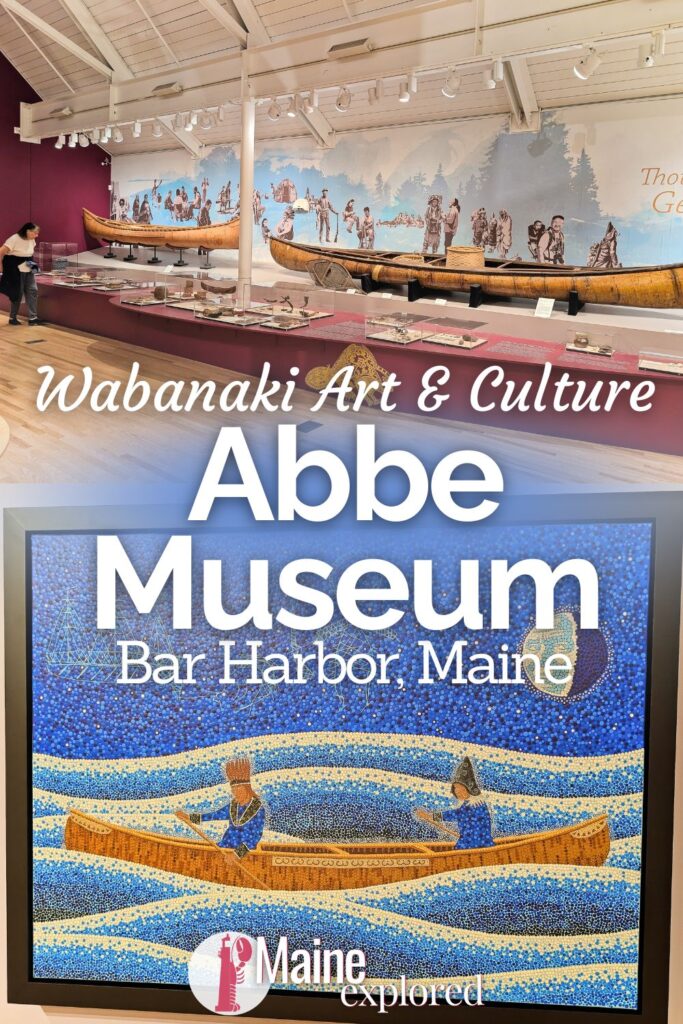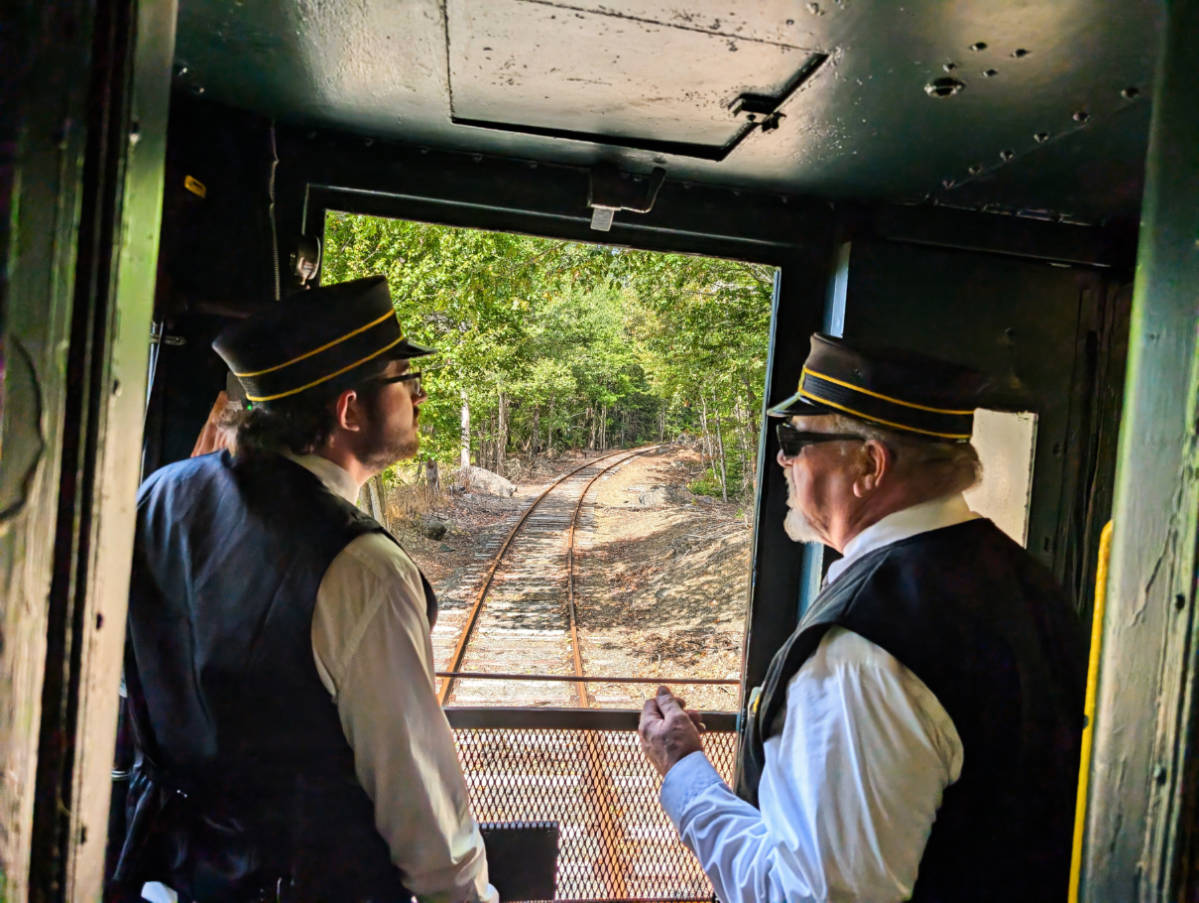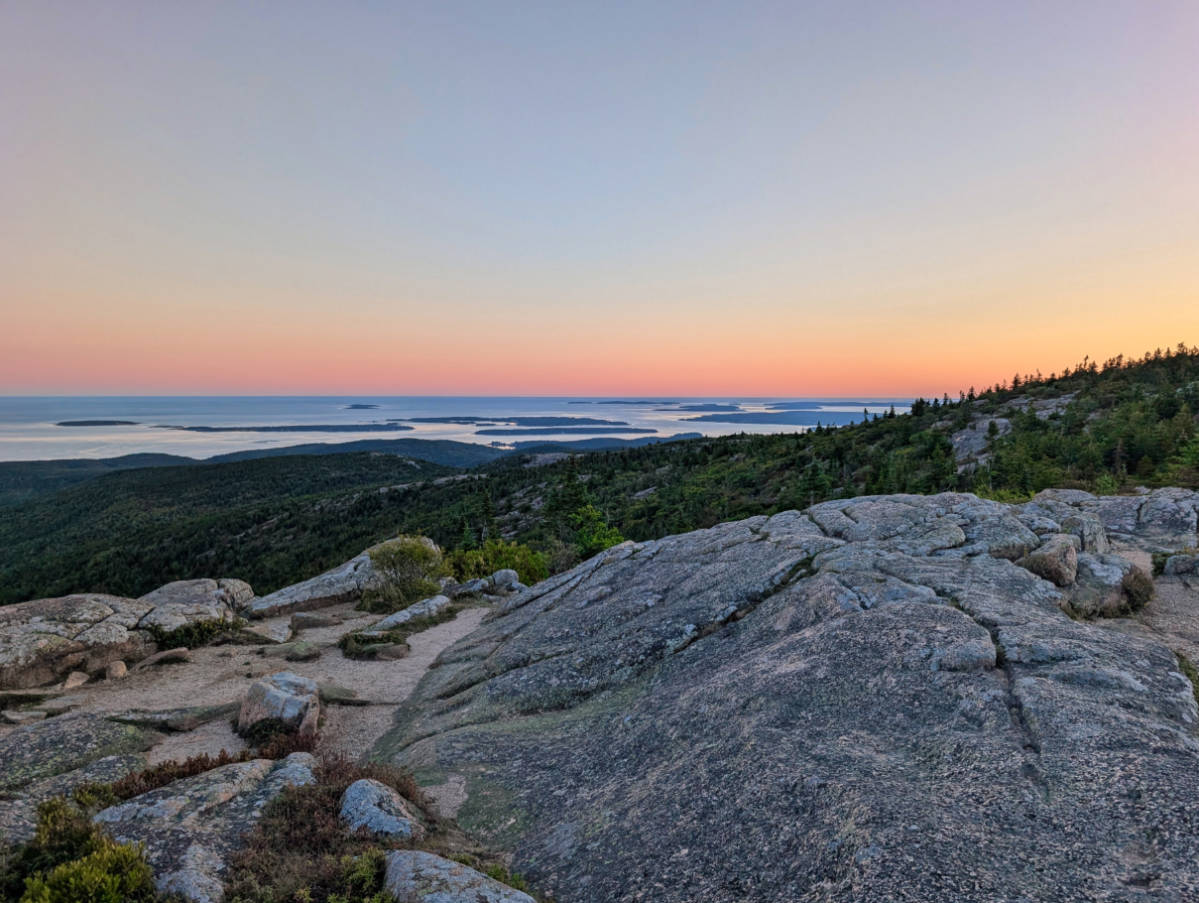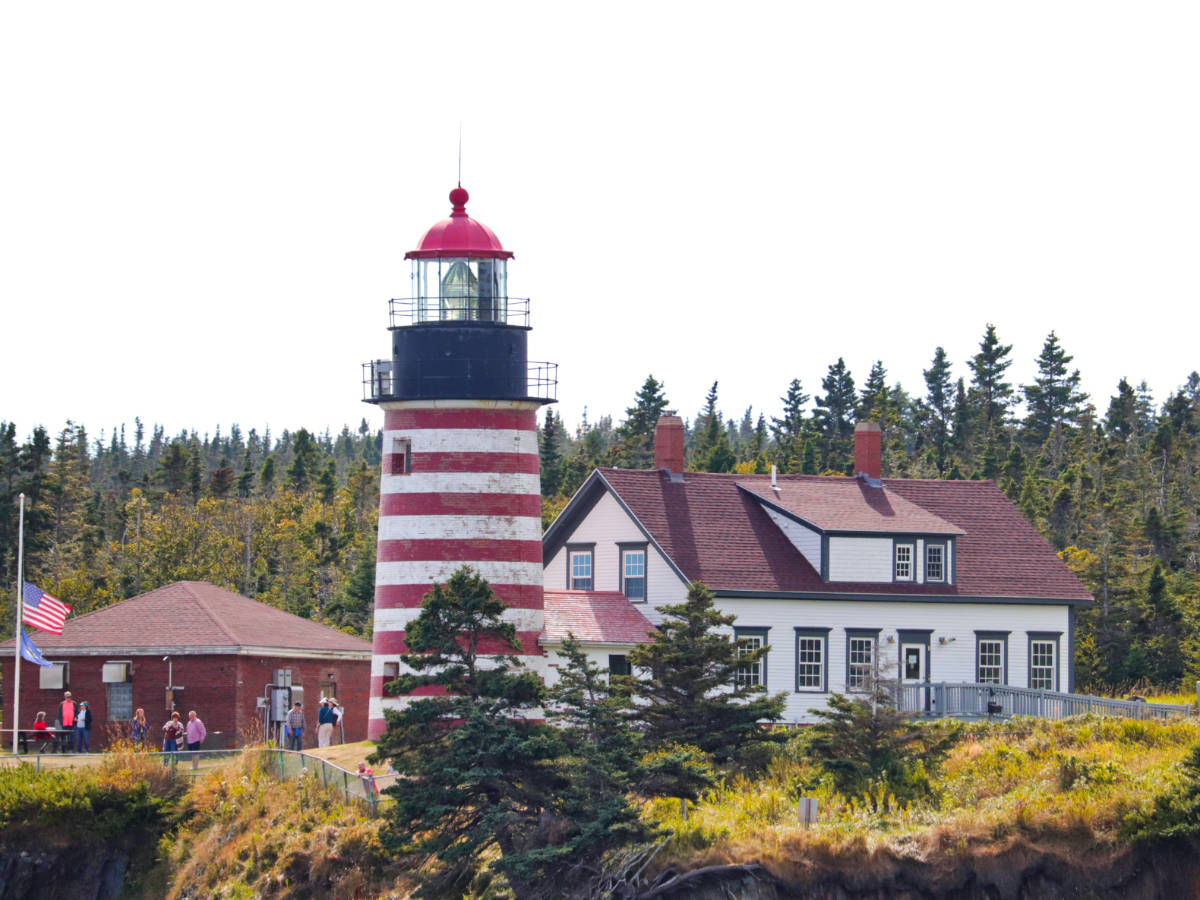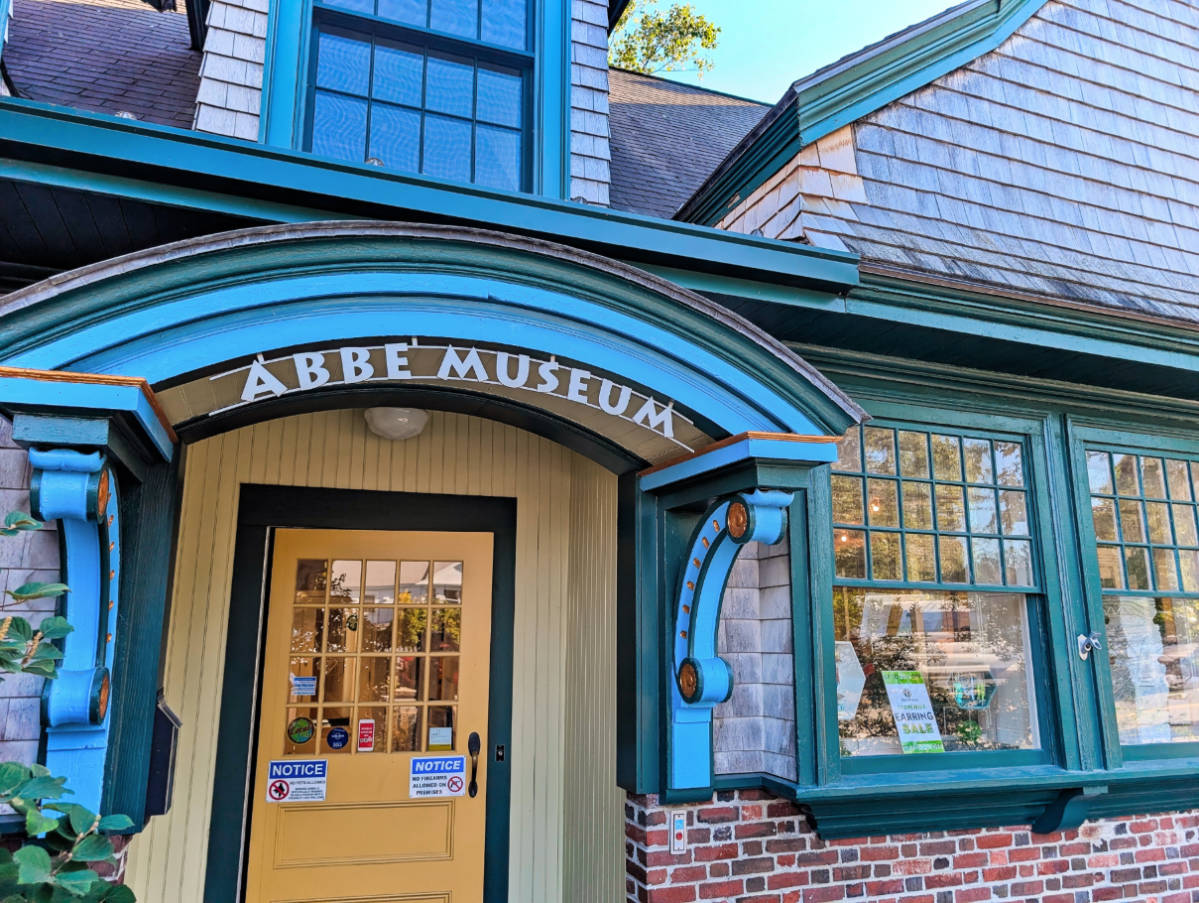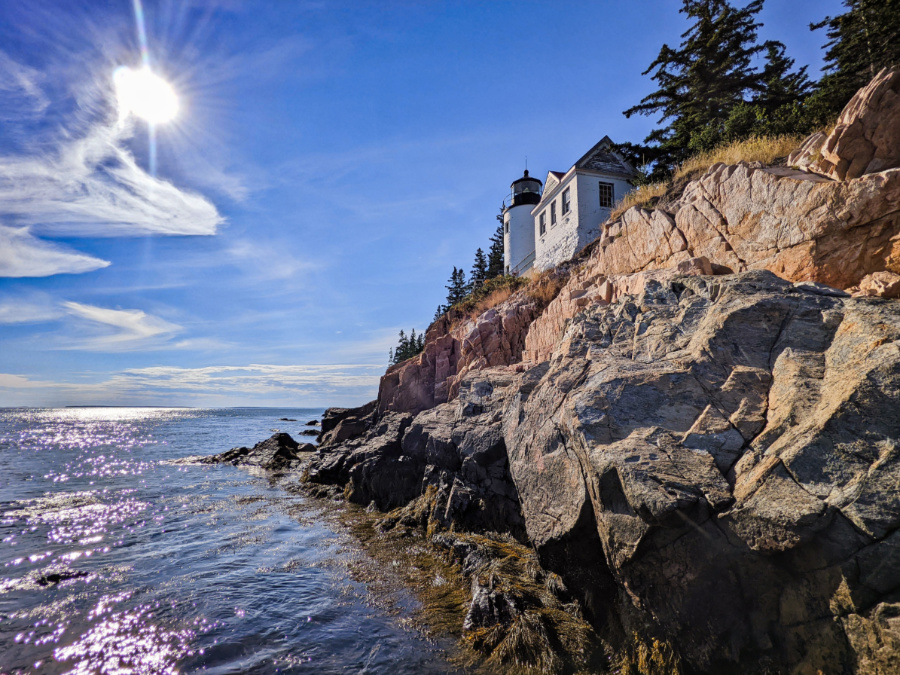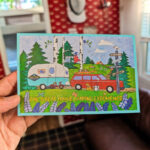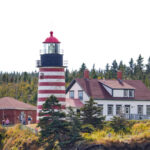Bar Harbor is all about lobster and being on boats and exploring Acadia National Park, but if you haven’t gotten to visit the Abbe Museum in town, add it to your next trip. Maine is home to many different indigenous nations, and the Wabanaki people are still very present and with their own culture today. The Abbe Museum explores both the history of the Wabanaki through archaeology and their modern communities through art. I love it and really think it’s one of the most thoughtfully created museums in Maine.
Whether it’s a rainy day in Bar Harbor and you’re looking for something to do or if you’re interested in learning about the culture of the original inhabitants of Mount Desert Island and the rest of Maine, the Abbe Museum is a great place to visit. We’ve got the full scoop on what you’ll find and tips for visiting with kids. If you have any questions about the Abbe Museum or exploring Bar Harbor, please leave a comment or send us a note. We’re always happy to share more and help you plan a great trip to Maine.
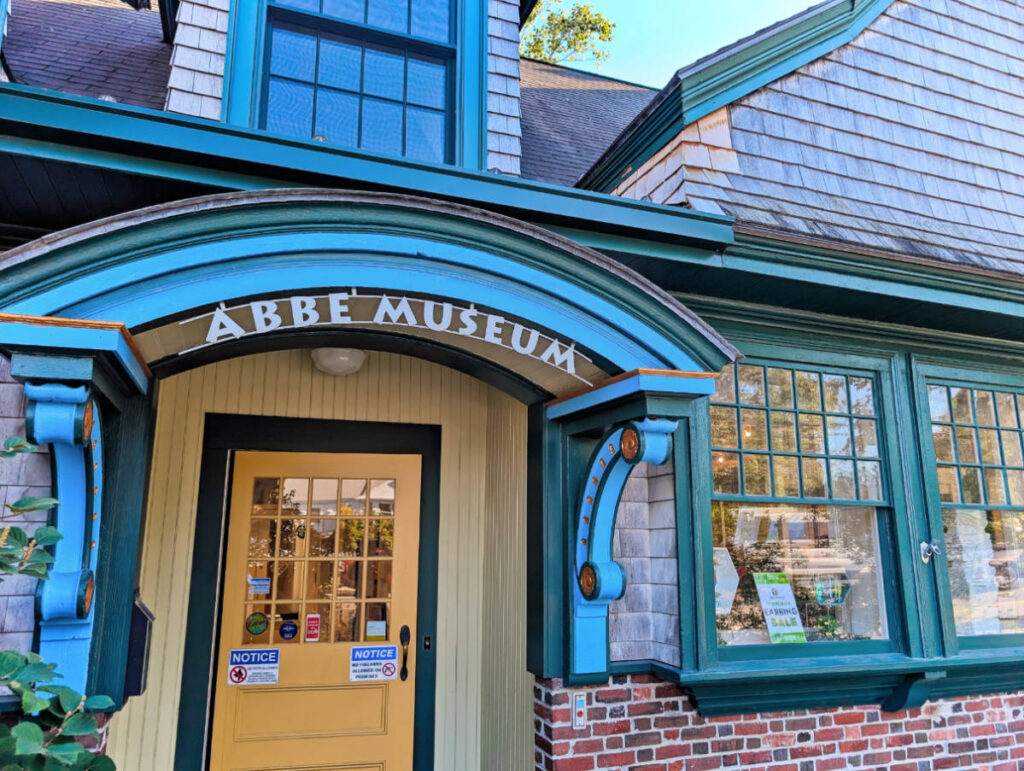
What Makes the Abbe Museum so Special
Very few museums tell such a thorough story of an indigenous group in the way the Abbe Museum in Bar Harbor does. The Wabanaki people, also known as the Wabanaki Confederacy, are still such a prominent part of Maine’s population, as well as Quebec and New Brunswick, that creating the exhibits and sharing the history and current issues of the Wabanaki can be done quite thoroughly. The Abbe Museum partners with local artists and historians within the Wabanaki community to curate its contents, as well as pays respect to the past through its displays.
Having been to many museums all around the USA and Canada, indigenous history is often only a small piece of any museum setting, so the Abbe Museum being fully dedicated to the Wabanaki nation is awesome. Just like other native American nations, the Wabanaki are further broken down into tribes and bands which all are represented in the exhibits here. Whether you’re reading about the current art exhibition or reviewing the historic artifacts, proper identification and respectful references are present across the board.
One of the most interesting parts of visiting the Abbe Museum is seeing the archaeological exhibits throughout the space. It’s more than a few arrowheads, like is so often the case in museums that have just pieces of indigenous history, but there is a whole archaeological laboratory on the lower level digging into the identification and study of Wabanaki artifacts. Dr Robert Abbe started the Abbe Museum in the 1920s to house his Wabanaki artifacts that he’d collected through the years and was able to get other archaeologists and members of the Wabanaki nation to join in building out the museum. Today the Abbe Museum is a combination of the artifacts and preserving the traditions and arts of the Wabanaki people. I love it and think it’s a fascinating and impressive museum.
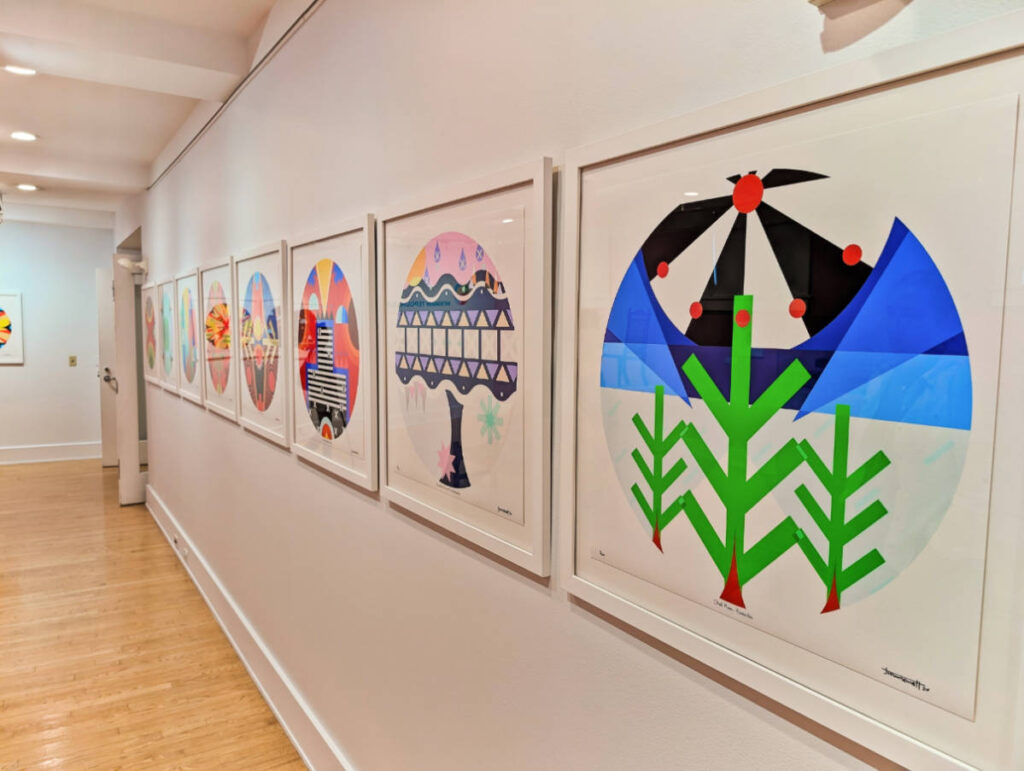
Tips for Visiting the Abbe Museum
The Abbe Museum isn’t a giant place to be lost in for hours, but you should allot yourself around 90 minutes to be able to make it through all the exhibits. The Abbe isn’t a breeze-through-and-go place, but it’s a spot to actually take your time and read everything. If you’re visiting with kids, it may be difficult to go slow enough to read each placard and display, but try.
For those visiting the Abbe Museum with kids, I would recommend to start in the front gallery and read about each of the Wabanaki Confederacy groups represented in the museum so you have some context to more of the pieces and exhibits through the rest of the space. Moving from there, the art galleries on the main floor will likely be the most interesting for kids, with very colorful works that are all about Wabanaki style and themes. My family is Lakota so when we find exhibits in different museums reflective of our ancestral culture they’re usually pieces of regalia and maybe some historic photographs. The art in the Abbe Museum is all about the living Wabanaki people and absolutely showcases how strong the culture and craft still are today.
I think kids will appreciate this element of the Abbe Museum if their adult companions take a few moments throughout the visit to help frame why the exhibits are special. There’s also a gift shop at the Abbe Museum. Before you leave, take a moment to see what art or books you might want to bring home as a souvenir or to share with others. Supporting the artists and the historians doing the work to make the museum what it is is such an important part of being a museum patron, and it’s greatly appreciated.
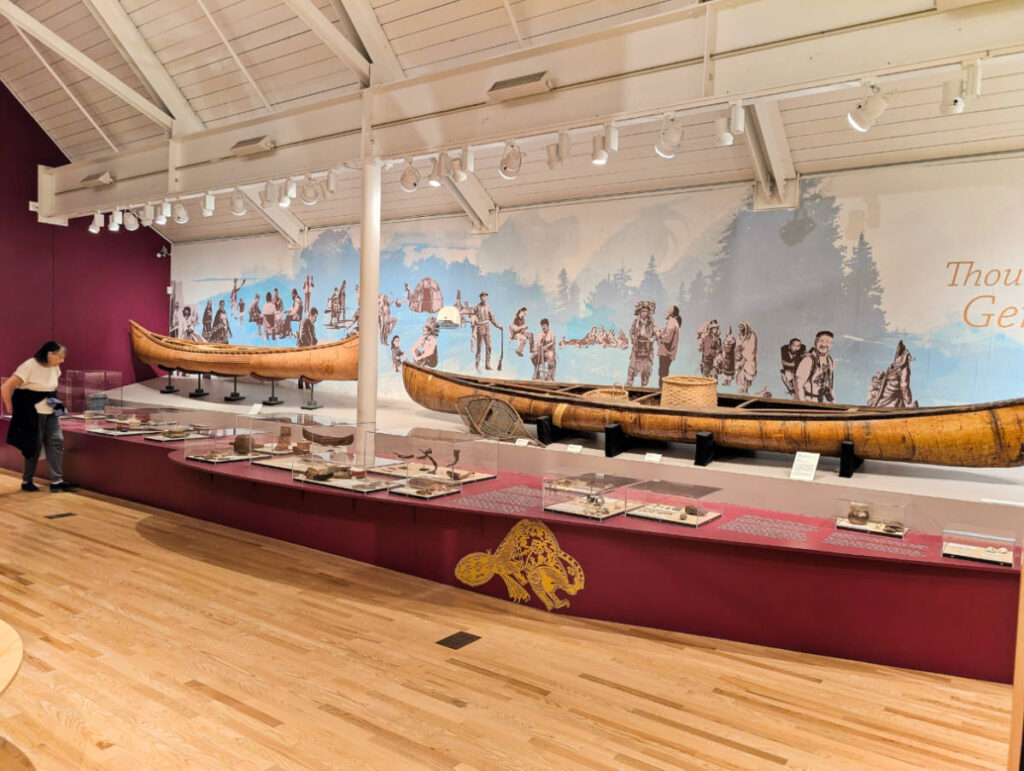
Need to Know for the Abbe Museum
When you visit the Abbe Museum, you’re welcome to take photographs of both the historic exhibits and the art installations (no flash, no commercial photography). One of the best ways to get others interested in visiting and learning about the Wabanaki culture is to share photos of what inspired you or was memorable from your visit, so snap a few pictures to share when you leave.
There are two levels to the museum, so you can take the stairs down or there is an elevator. There are places to sit throughout the galleries so if mobility is a challenge, guests have ways to enjoy each part of the Abbe Museum, through the accessible paths and spacious galleries. It is a museum, so remember, food and drink are not allowed, so finish that coffee or lobster roll before you come in. Don’t worry, this isn’t such a giant museum that you’ll be suffering from hunger and museum fatigue by the time you’re done.
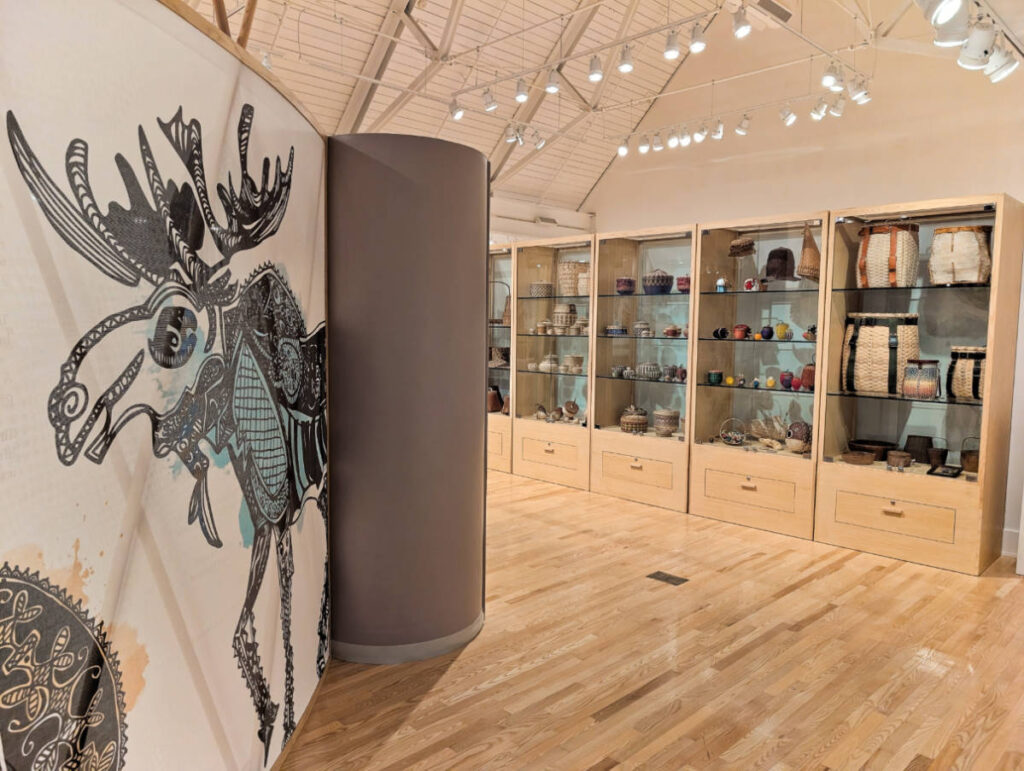
Parking at the Abbe Museum
I may have to write a whole article about why I hate parking in Bar Harbor, but for now let’s just cover parking for the Abbe Museum. Located in the downtown core of Bar Harbor, the Abbe Museum has street parking all around it. The parking is metered, so be sure that when you park you’ve paid correctly at the station or through the ParkMobile app. Don’t think you can be sneaky or forget to pay and then be upset if you come back to a parking ticket, or worse, they tow your car. Bar Harbor is a very busy tourist town and they know that parking is a big revenue source for the city, so don’t mess it up! There is a paid parking lot a block away from the Abbe Museum, and other lots beyond that. If you’re planning on walking around Bar Harbor beyond your time at the museum, make sure that you are keeping your parking meter loaded, which you can do through the mobile app.
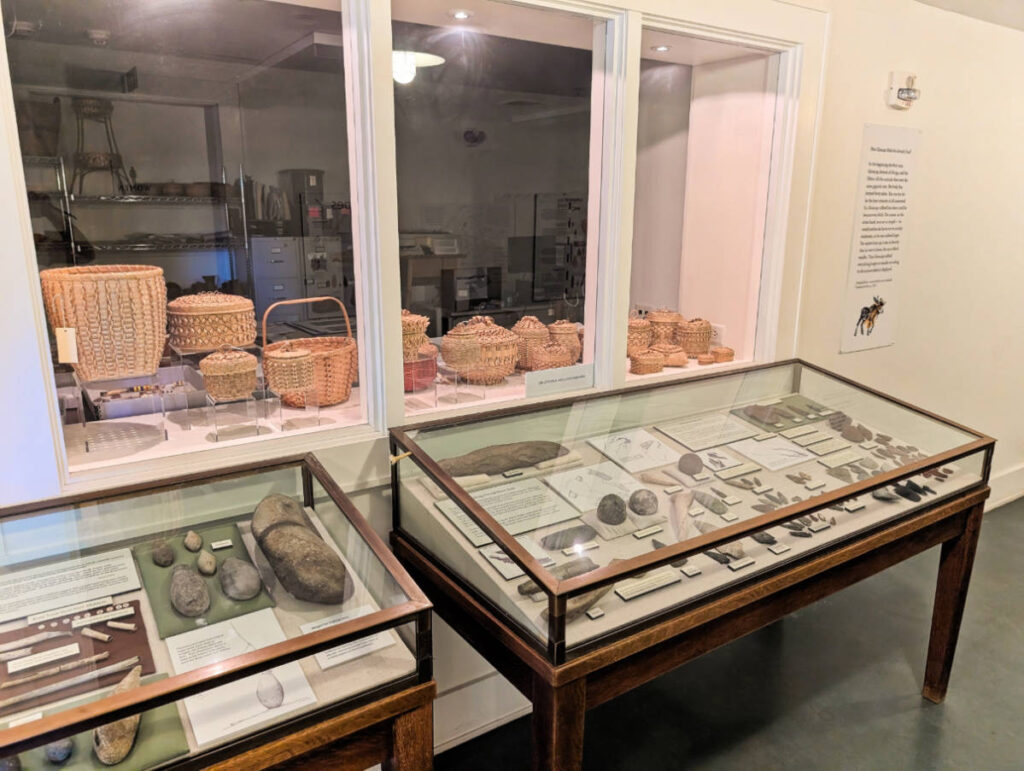
Abbe Museum Operating Information
To complete your planning, here is all the information to plan your visit to the Abbe and the rest of your time in Bar Harbor.
- Operating Dates/Season: year round, 10:00 am to 5:00 pm, closed on weekends
- Office phone number: 207-288-3519
- Company website: AbbeMuseum.org
- Museum address: 26 Mt Desert St, Bar Harbor, ME 04609
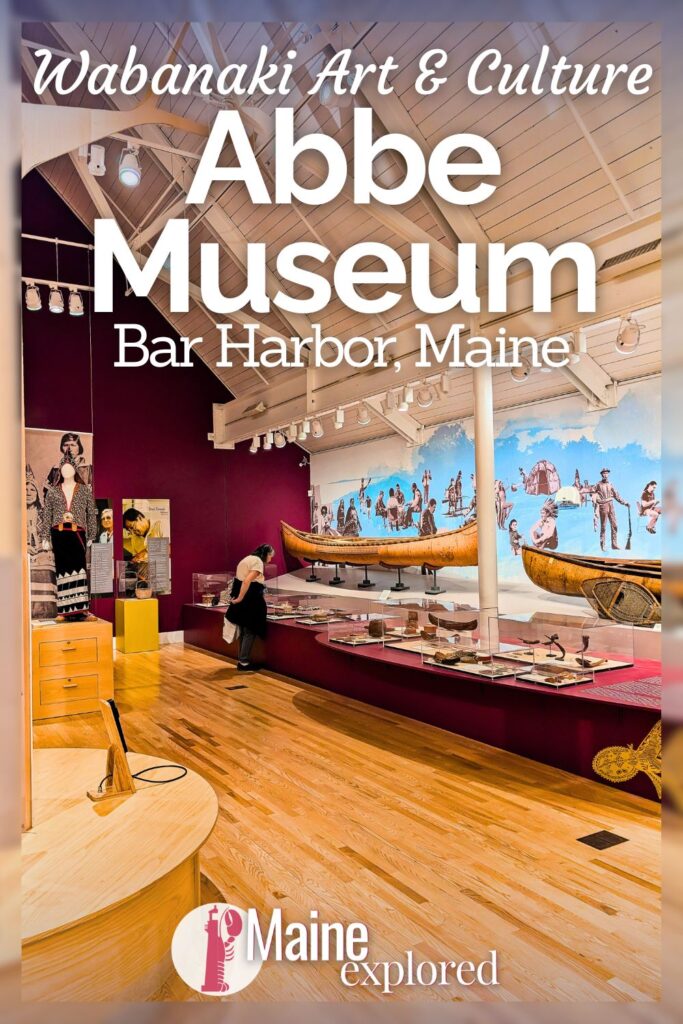
DownEast and Acadia National Park Information
Be sure to check out our other resources for visiting the DownEast region and Acadia National Park in addition to our fun Bar Harbor ideas. You should be able to put together a wonderful plan to enjoy the park and DownEast Maine with our recommendations for things to do and how best to explore the Park. Try to set aside some time to get out on the water, be sure you have a lobster roll or two, and enjoy the quiet of the towns all around Mount Desert Island and nearby.
And although we do have an entire article about where to stay at Acadia NP, if you just want to peek at options really quickly, here is a quick glance into lodging options all around Mount Desert Island. Remember that hotels offer more services and convenience than vacation rentals typically do, especially when you’re in Maine.
I hope you’ll consider visiting the Abbe Museum as a part of your trip to Acadia National Park and Mount Desert Island. Visiting this part of Maine is really special in any season. If you have any additional questions or need some recommendations for something else, please leave a comment or send us a note. We’re happy to share more and help YOU have a wonderful trip as you explore Maine!
